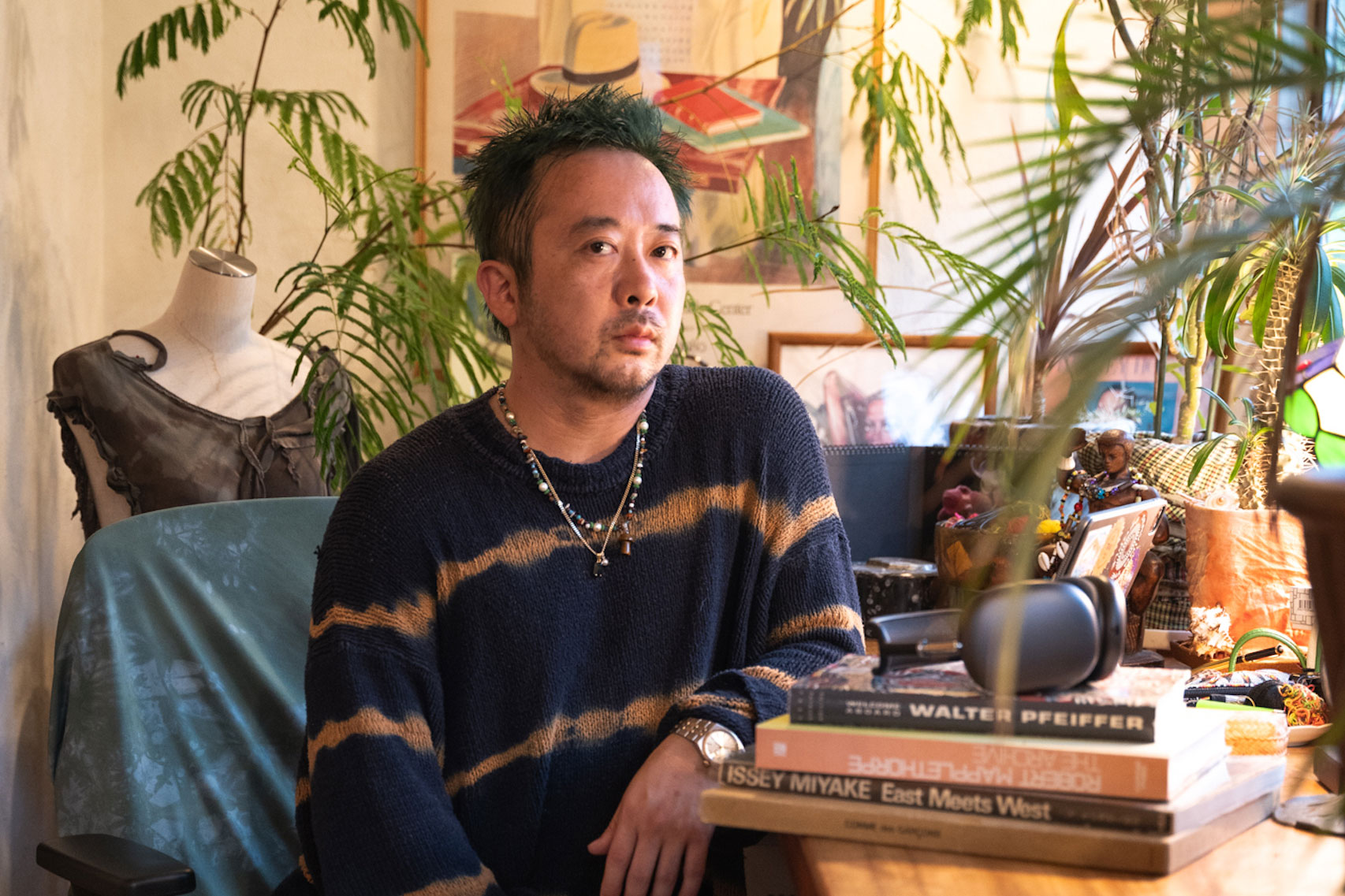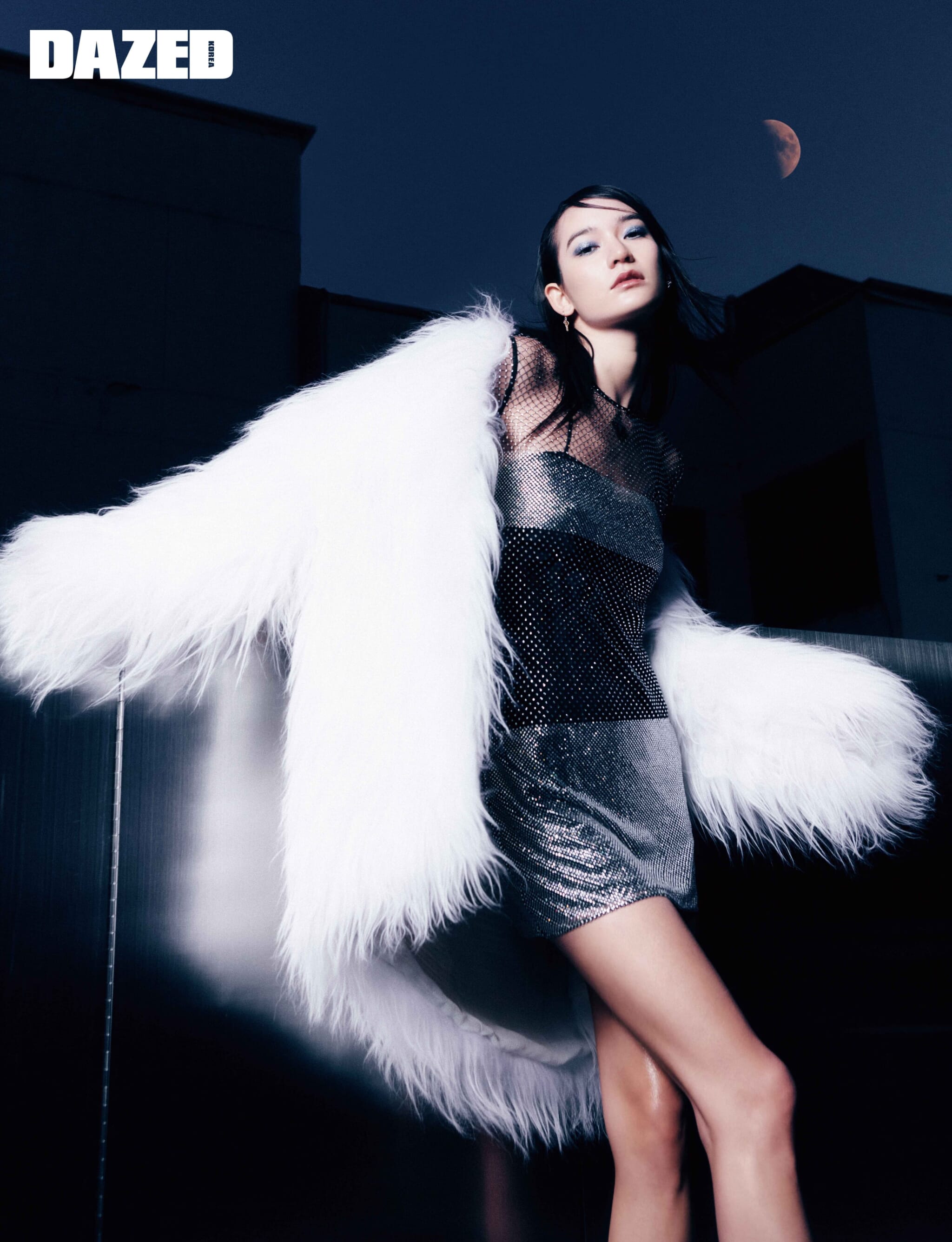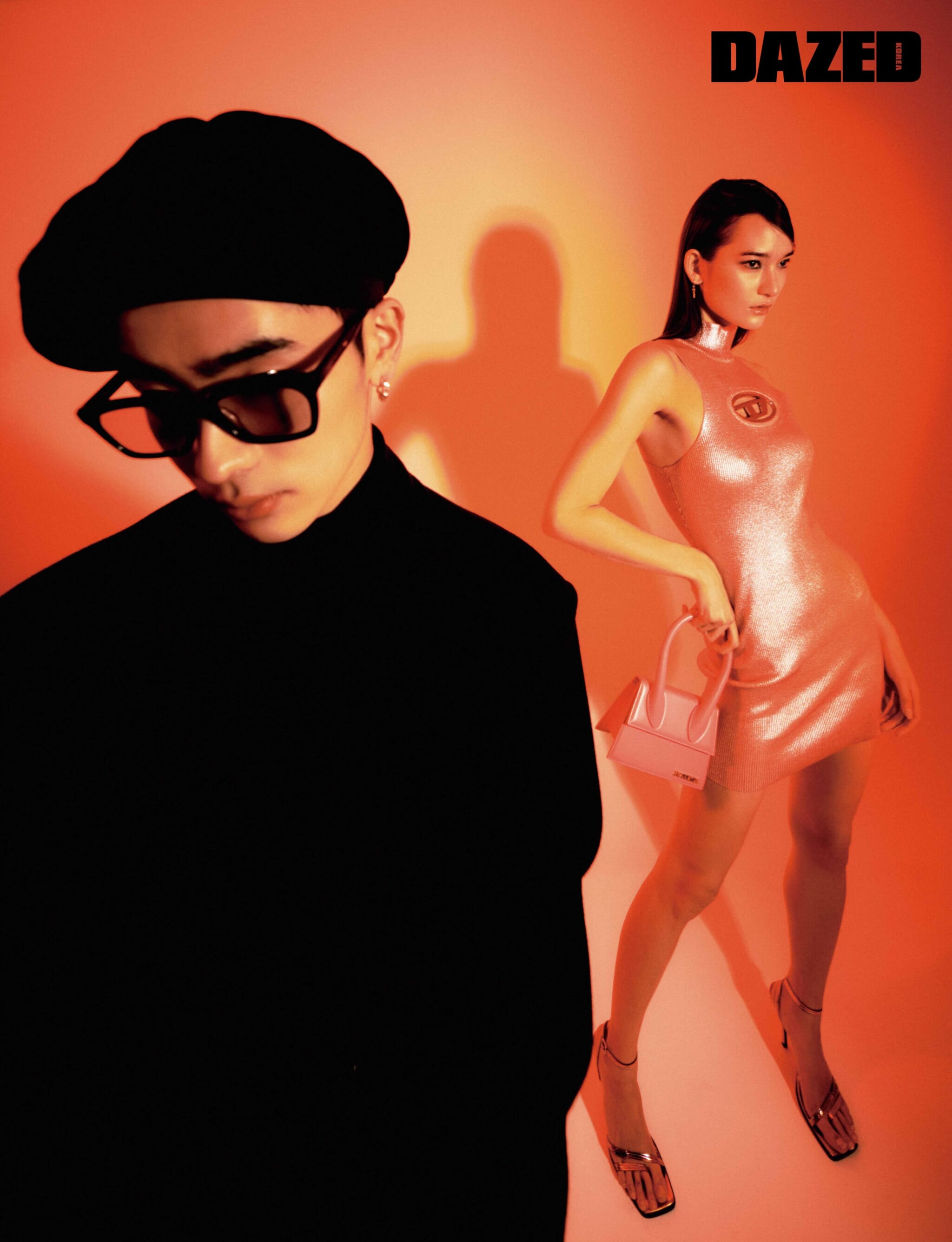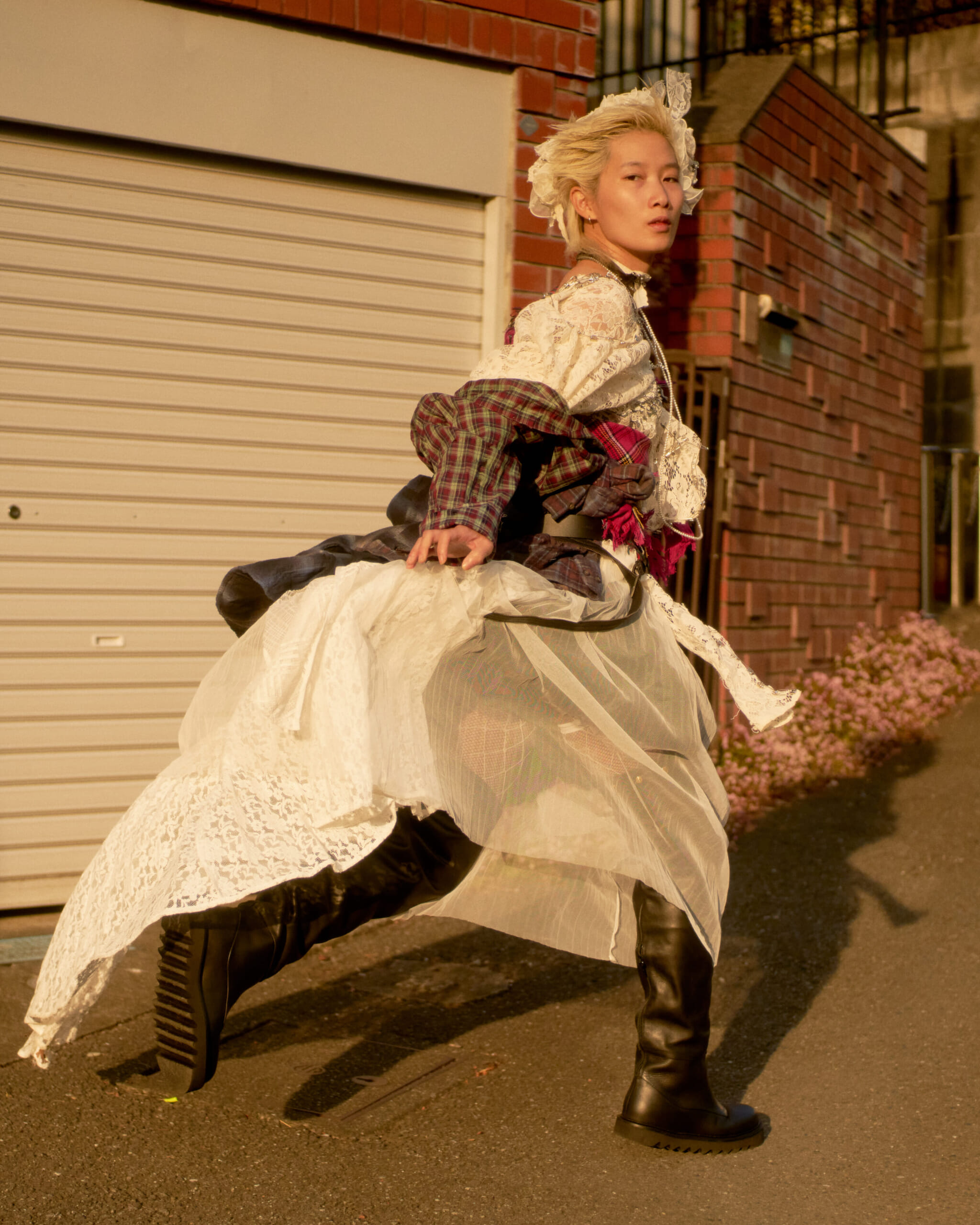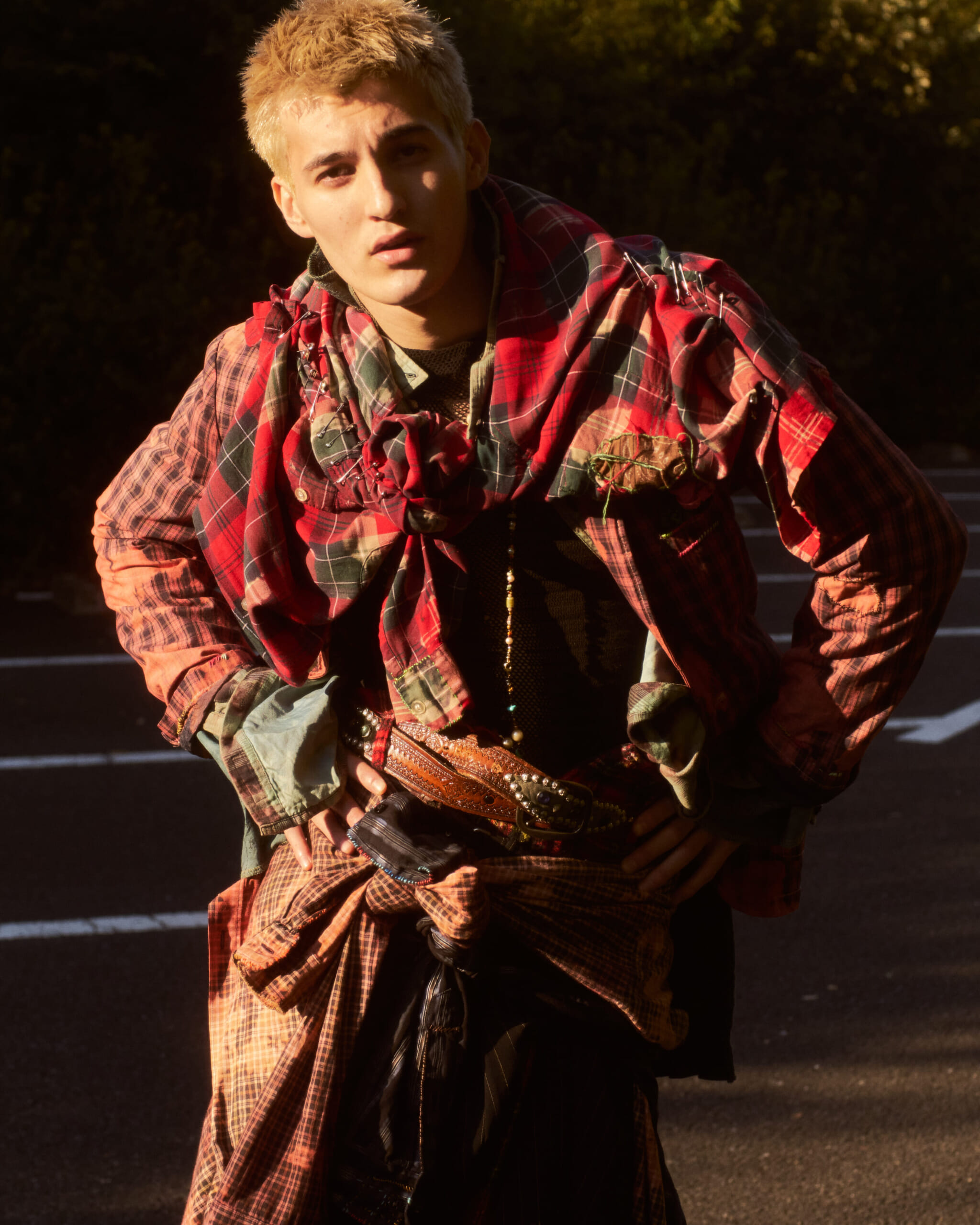The first time Shun Watanabe and I meet for an interview, the stylist and editor spends two hours retelling tales from his 20-plus years as one of the top shakers in the Tokyo fashion scene. Thanks to his long career working both in Japan and abroad — often in Europe and the U.S. — he is full of anecdotes, many of which involve the biggest names of the 2000s. It’s clear that he loves to relive the good old days.
In the end, we cover none of the topics we’d planned to discuss, instead getting lost in hilarious but mainly off-the-record stories. We do a second interview several days later, this time managing to cover the biggest topics, including the changing fashion scene and Watanabe’s brand, Newsian.
Bridging the Gap Between Music and Fashion
Watanabe tells me that he discovered fashion through music. From the age of 15, he regularly sneaked out of his house to hang out and DJ with his older friends. He worked several part-time jobs to earn money for records and DJ’d around Shibuya on weekends. “That was my ’hood, you know?” he tells me in an American-leaning accent. He headed to Bunka Fashion College — Tokyo’s top fashion school — simply to copy his friends. “I had no idea what I wanted to do,” he admits.
Ultimately, he ended up interning at Vogue Nippon, having a eureka moment when he saw the glamorous Ako Tanaka, a Vogue Nippon editor at the time. “She was it,” he says, emphasizing the last word. Luckily, she was after an assistant, and Watanabe stepped up. What followed was a period of working hard and playing hard. “I’d start at 9am and get back around 4am each day,” he tells me. “I was out in Ni-chome (Tokyo’s gay neighborhood) all the time.”
It was around then that he met Nicola Formichetti, who at the time was Lady Gaga’s stylist. The pair became fast friends and collaborators. They’d hit up gay bars with friends, including designers Kim Jones and Koji Maruyama, the group sharing their love of music, fashion and wild nights out. He credits his friendship with Formichetti for jobs, both editorial and styling, that saw him regularly switch between Europe, the U.S. and Asia.
City Pop Mania
Speaking to Watanabe, it’s clear just how much he is influenced by music, even now. He sees his early days in Shibuya as parallel to his fashion career and enthuses about music-related editorial work. Growing up in Tokyo at the end of the bubble era meant there was a substantial budget for creative outlets, including music. For Watanabe, this background is his unique selling point. “A big part of my styling and editorial work is informed by my experiences of Japanese culture from the ’80s to the 2000s.”
His Instagram is filled with images from music-themed fashion shoots, including shots from a recent piece in GQ Japan that recreated famous covers from the city pop genre of music popular in the ’80s. Other images — grainy photos with bulbous Y2K distortion and bright neon colors à la bubble-era Japan — are from a shoot for Dazed Korea earlier this year for which he was the art director.
Watanabe’s DJ’ing experiences inspire him in another way too. “I like to mix clothes just like I mix records,” he says. “In the past, when I styled for Vogue, I only used high-end brands. But since the 2010s, I’ve gotten into streetwear, so a lot of my styling mixes both.” It’s worth noting that he has a long-standing creative partnership with Uniqlo.
The Changing Faces of Japanese Fashion
Watanabe has seen a lot of change over the years. He mentions the boom in non-white models, highlighting how the fashion world has become more diverse in its casting. He’s also noticed differences between the West and Asia, saying, “I think people in the West are a lot more body positive and open about their sexuality than in Japan and Asia.” He illustrates this point by recounting an episode from his time as fashion editor of Vogue Hommes Japan alongside Formichetti when the pair did a bondage-inspired shoot with Lady Gaga. The 2009 shoot raised eyebrows in the Japanese publishing industry but was met with applause abroad.
Due to his wide-ranging global experience and increased work with Korean creatives in the last 10 years, Watanabe is well placed to note the differences between Japan and Korea too. He raves about K-pop band NewJeans and insists that the recent K-pop boom is not coincidental. “The Korean government gets it,” he tells me. “They’re putting a lot of money into entertainment in Korea, and I think that’s a big reason why the industry is as viable as it is today. The Japanese government, on the other hand, doesn’t seem to get this.”
Building His Sustainable Brand
In 2019, concerned with the lack of awareness around sustainability in the Japanese fashion industry, Watanabe launched his own clothing brand, Newsian. The name is a portmanteau of “new” and “Asian” and is meant to illustrate the brand’s concept, which revolves around pride in Asian culture and keeping up with the times.
Watanabe originally intended Newsian to be a lifestyle brand but switched focus to just clothing because of the pandemic. “Being at home thanks to the coronavirus, I realized just how many clothes I had,” he says. Newsian became an outlet for his creativity, with Watanabe remaking clothing items, hand-embroidering vintage pieces and tie-dyeing articles to upcycle. “Over the course of the pandemic,” he says, “the process became a kind of meditation for me.” Even now, he relishes time spent in his atelier.
In contrast to traditional upcycled brands, Newsian makes sustainability a desirable commodity, with each piece hand finished by Watanabe himself. Perusing the brand’s looks, it’s clear that Newsian is different. Those involved, from models to photographers, are major players in the Tokyo fashion scene — and, of course, Watanabe styles each shoot. It’s not just his own clothing getting the Newsian treatment, either. “I get my clothes from friends as well,” he tells me. Upon hearing this, I flash back to his many celebrity anecdotes and think it is a statement sure to excite anyone with an interest in Japanese fashion.
At present, Watanabe works on remaking clothes by hand at his atelier in Jindaiji, where he is currently based. He has his sights set beyond Japan’s borders, however, and plans to relocate to Los Angeles later this year and move between North America and Asia. “Jindaiji is like LA vibes,” he says before sharing his ultimate goal: “I want to bring Asia to the U.S.”
Keep up with Shun Watanabe on Instagram.
Updated On August 30, 2023

